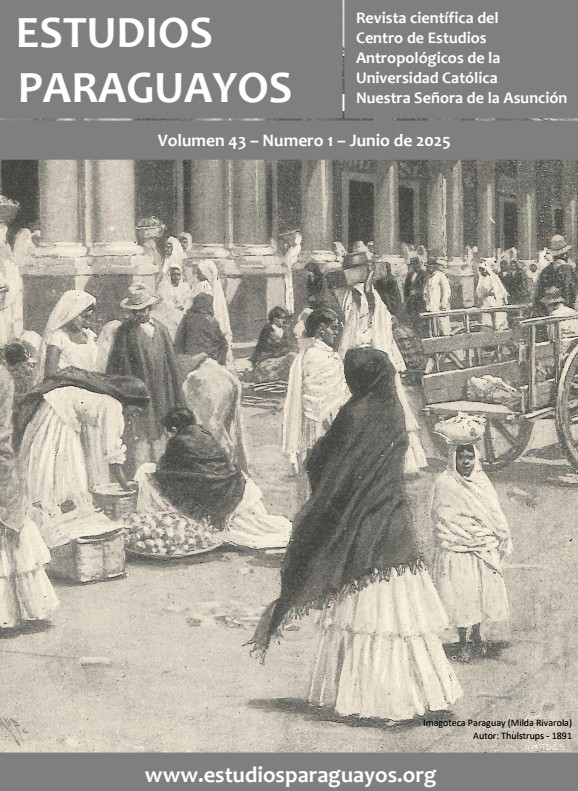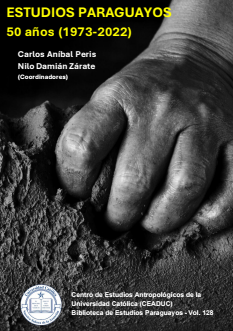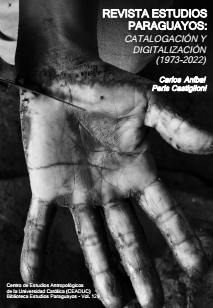Paraguay and its new challenges: greater productivity and productive diversification
DOI:
https://doi.org/10.47133/respy43-25-1-1a-04Keywords:
productivity, productive diversification, economic development, Paraguay, agribusinessAbstract
This article analyzes Paraguay's economic challenges in achieving sustainable development through increased productivity and productive diversification. Paraguay maintains macroeconomic stability, but growth has moderated since 2013, affecting poverty reduction. The economy shows high dependence on agriculture (soybeans, beef), creating vulnerability to external shocks. To increase productivity, five interventions are proposed: strengthening business ecosystem, improving competition, developing entrepreneurial capabilities, facilitating financing and market access. Diversification includes agribusiness development, emerging sectors, value chains and specialized clusters. National productivity determinants require improvements in institutions, innovation, education and infrastructure, where Paraguay shows lagging regional indicators.
Downloads
References
Banco Interamericano de Desarrollo. (2010). La era de la productividad: Cómo transformar las economías desde sus cimientos. Banco Interamericano de Desarrollo.
Banco Mundial. (2024). Reporte de crecimiento de Paraguay. Grupo Banco Mundial.
Borda, D., & Caballero, M. (2020). Crecimiento y desarrollo económico en Paraguay. CADEP.
Cepal. (2021). Perspectivas económicas de América Latina 2021: Avanzando juntos hacia una mejor recuperación. Comisión Económica para América Latina y el Caribe.
Hausmann, R., Hidalgo, C. A., Bustos, S., Coscia, M., Simoes, A., & Yildirim, M. A. (2014). The atlas of economic complexity: Mapping paths to prosperity. MIT Press.
Hidalgo, C. A., & Hausmann, R. (2009). The building blocks of economic complexity. Proceedings of the National Academy of Sciences, 106(26), 10570-10575.
Japan International Cooperation Agency. (2000). Estudio sobre el desarrollo económico de la República de Paraguay. JICA.
Krugman, P. (2019). The age of diminished expectations: U.S. economic policy in the 1990s (4th ed.). MIT Press.
Porter, M. E. (2008). Competitive advantage: Creating and sustaining superior performance. Free Press.
Rodrik, D. (2018). Straight talk on trade: Ideas for a sane world economy. Princeton University Press.
Sachs, J. D., & Warner, A. M. (2001). The curse of natural resources. European Economic Review, 45(4-6), 827-838.
Solow, R. M. (1956). A contribution to the theory of economic growth. The Quarterly Journal of Economics, 70(1), 65-94.
Stiglitz, J. E. (2017). The euro: How a common currency threatens the future of Europe. W. W. Norton & Company.
United Nations Conference on Trade and Development. (2020). Trade and development report 2020: From global pandemic to prosperity for all. United Nations.
Williamson, J. (2000). What should the World Bank think about the Washington Consensus? The World Bank Research Observer, 15(2), 251-264.
Wacquant, L. (2007b). La cárcel es una institución fuera de la ley. Conversación acerca de las cárceles de la miseria. URVIO: Revista Latinoamericana de Estudios de Seguridad, 1, 153-160.
Wacquant, L. (2009). Castigar a los pobres: el gobierno neoliberal de la inseguridad social. Editorial Gedisa.
Wacquant, L. (2010). Las cárceles de la miseria. Alianza.
Wacquant, L. (2011a). Neoliberal penality at work: A response to my Spanish critics. Revista Española de Sociología, 15, 115-123.
Wacquant, L. (2011b). Forjando el Estado neoliberal: workfare, prisonfare e inseguridad social. Prohistoria: Historia, Políticas de la Historia, 16, 1-18.
Yugueros, A. (2013). La delincuencia femenina: una revisión teórica. Foro: Revista de Ciencias Jurídicas y Sociales, 16(2), 311-316.
Published
How to Cite
Issue
Section
License
Copyright (c) 2025 Dionisio Borda y Estudios paraguayos

This work is licensed under a Creative Commons Attribution 4.0 International License.
















